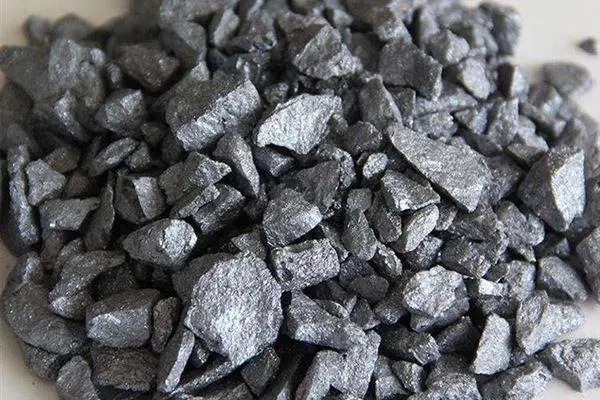Ferrosilicon is available in various grades differentiated by their silicon content and other alloying elements. Each grade has specific characteristics and applications across different industries.

Ferrosilicon 75%: This grade contains around 75% silicon along with iron and trace elements. High silicon content provides excellent resistance to corrosion and oxidation, good electrical conductivity, and magnetic properties. It’s relatively brittle but offers high hardness.
Used in the production of stainless steel and other corrosion-resistant alloys, particularly in the metallurgical and electrical industries. It’s widely used as a deoxidizer in steelmaking processes, effectively removing oxygen from molten steel. This action enhances the quality of steel by reducing impurities. Additionally, it’s utilized in the production of inoculants for cast iron, controlling its structure and properties.
Ferrosilicon 72%: With a silicon content of approximately 72%, this grade is primarily used in the manufacturing of ductile iron. Similar to the 75-grade variant but with slightly lower silicon content. Offers good corrosion resistance, electrical conductivity, and magnetic properties. Its precise silicon content allows for controlled graphite formation, enhancing the mechanical properties of ductile iron. Employed in similar applications as the 75-grade alloy. The choice between 72 and 75 grades might depend on specific requirements or cost-effectiveness in applications such as stainless steel production and electrical engineering.
Ferrosilicon 45%: This grade, comprising about 45% silicon, acts as a source of silicon in various alloy manufacturing processes. It’s particularly valuable in the production of stainless steel, where it aids in reducing metal oxides to achieve the desired composition and properties of the final steel product. Utilized in the manufacturing of carbon steel and cast iron where the emphasis is on mechanical properties rather than corrosion resistance or electrical conductivity. Used in foundries for alloying purposes to improve strength and wear resistance.
Ferrosilicon 15%: This grade contains around 15% silicon and is often used as a reductant in chemical processes. It’s employed in the production of various alloys and compounds where a lower silicon content is required compared to other grades of ferrosilicon. It finds applications in specific metallurgical and chemical industries. Used in specific cases where a minimal amount of silicon is necessary as an alloying element. This grade might find applications where silicon’s presence is required but not in substantial amounts, depending on the specific alloy requirements.
The choice of ferrosilicon grade depends on the desired silicon content, the intended application, and the specific properties required in the final alloy or product. Each grade offers unique benefits and plays a crucial role in different industrial processes. Whether it’s enhancing steel quality, controlling the structure of cast iron, aiding in chemical processes, or modifying the properties of various alloys, these different grades of ferrosilicon find their niche in diverse industrial applications.
Furthermore, these ferrosilicon grades are vital components in metallurgical processes, serving as efficient and cost-effective means to introduce silicon into alloys, modify their properties, and achieve desired material characteristics. Their versatility and ability to tailor alloy compositions make them indispensable across various industries, from steelmaking to alloy production and beyond.
